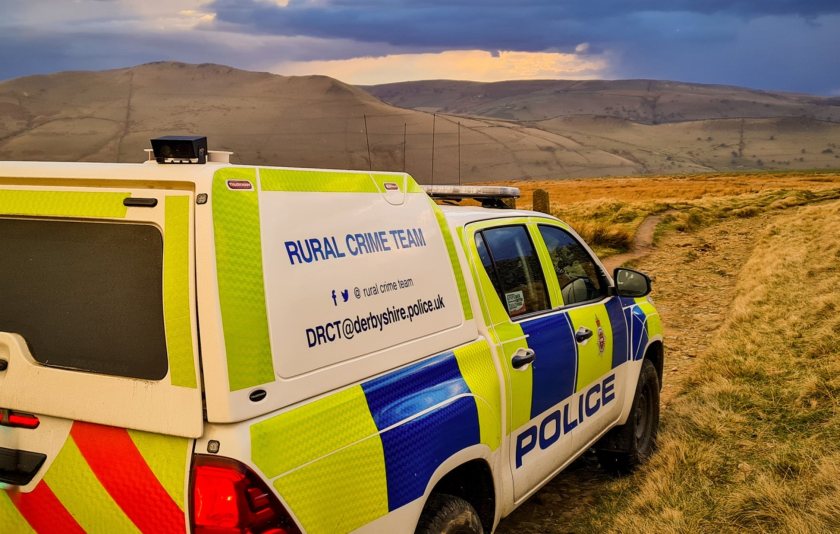
Britain’s countryside is set for a major crackdown on organised criminal gangs as police unveil a new three-year strategy designed to tackle the growing threat to rural communities, farms and wildlife.
The plan introduces a stronger intelligence-led approach to rural crime, with forces set to use advanced data analytics and national crime-mapping to pinpoint hotspots and track offending patterns across the country.
Police chiefs say the shift will help target organised crime groups operating in remote areas more effectively and ensure resources are deployed where they are most needed.
Officers are also turning to new technology, including expanded drone use and other air-support tools, to help tackle wildlife crime in vast and difficult terrain.
The strategy coincides with new legislative powers in the Crime and Policing Bill, expected to gain Royal Assent next year, which will allow officers to recover stolen agricultural machinery more quickly and without a warrant.
National training programmes will also be rolled out to help forces investigate machinery theft, livestock crime and wildlife offences, with DNA analysis used to identify offenders and strengthen prosecutions.
Deputy Chief Constable Nigel Harrison, the National Police Chiefs’ Council lead for Rural and Wildlife Crime, said officers across the country were already working tirelessly to protect rural areas.
“The strategy 2025–2028 sets out clear priorities and help focus these efforts,” he said. “Rural crime is constantly evolving and by working with our communities and our stakeholders, we are best placed to meet this challenge with a response that is robust and effective.
"This is about more than just protecting animals and property; this is about confronting serious organised criminality that exploits our environment and undermines communities.”
As police prepare to roll out the new strategy, recent figures suggest some progress is already being made. The financial toll of rural crime has fallen by more than 16%, according to NFU Mutual’s latest report, with coordinated crackdowns and increased community vigilance credited for the improvement.
Agricultural vehicle theft — historically one of the most disruptive and costly crimes affecting farmers — dropped by 35% to an estimated £7 million. Quad bikes and ATVs remain prime targets, but losses fell by 16% to £2.7 million, highlighting the impact of better intelligence-sharing and more proactive policing.
Police leaders say the strategy will help build on this momentum and strengthen visible policing in rural areas, addressing longstanding concerns that isolated communities feel more vulnerable and less connected to local forces than those in urban areas.
Crime and Policing Minister Sarah Jones said rural crime “can wreak havoc on the livelihoods of farmers and countryside communities” and welcomed the tougher approach.
She said the strategy, combined with new powers to target criminals stealing machinery, livestock and equipment, was a key part of efforts to deliver safer streets. “Our Neighbourhood Policing Guarantee will also play a crucial role embedding visible policing back into neighbourhoods, including rural areas,” she added.
Rural affairs minister Angela Eagle said rural crime inflicted multimillion-pound losses each year through stolen machinery, livestock and offences such as hare coursing. She said the combination of new powers, improved data sharing and increased collaboration would help forces make countryside communities safer.
The strategy sets out nine priority crime areas, including machinery and livestock theft, livestock worrying, illegal hunting, poaching and offences against protected species such as bats, badgers and birds of prey.
Police warn these crimes undermine both the economic and social stability of rural life and are increasingly carried out by organised groups bringing “a level of sophistication and menace” that demands a coordinated national response.
So far this year, rural policing teams have recovered more than £12.7 million worth of stolen machinery, including £825,500 traced from overseas, leading to 155 arrests.
The Home Office is providing funding for both the National Rural Crime Unit and the National Wildlife Crime Unit this financial year, alongside plans to enforce the Equipment Theft (Prevention) Act 2023, which will require new all-terrain vehicles and GPS units to be properly marked and registered.
The strategy has been broadly welcomed across the rural sector. NFU vice-president Rachel Hallos said farmers had long called for a more joined-up approach.
“For too long, criminal gangs have exploited the countryside, targeting machinery, livestock and land with devastating impacts on businesses and families,” she said, adding that delivery on the ground would be crucial.
The National Rural Crime Network said the strategy’s focus on organised criminal networks, waste crime and fly-tipping, along with recognition of rural vulnerabilities such as isolation and mental-health pressures, was encouraging.
The organisation said it would work with law enforcement and government to help secure the funding and legislative changes needed to protect rural communities.
Country Land and Business Association president Gavin Lane also welcomed the strategy but urged “urgent action”, including embedding rural crime teams in every force and ensuring long-term funding, essential equipment and improved training for call handlers.
He said many rural communities were already struggling with isolation and had “had enough of criminals and violent organised gangs targeting them”.
The strategy will now be rolled out across police forces as preparations begin for its full implementation between 2025 and 2028.
